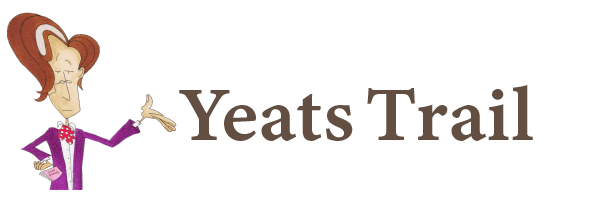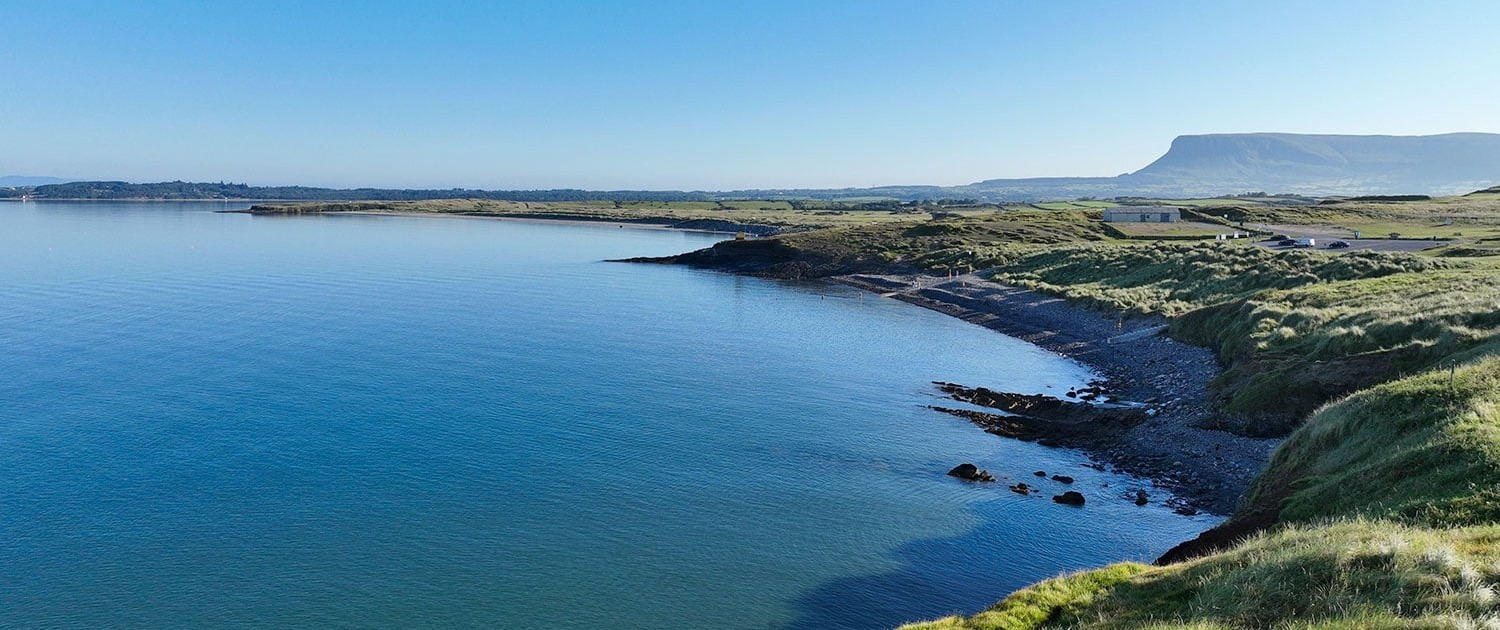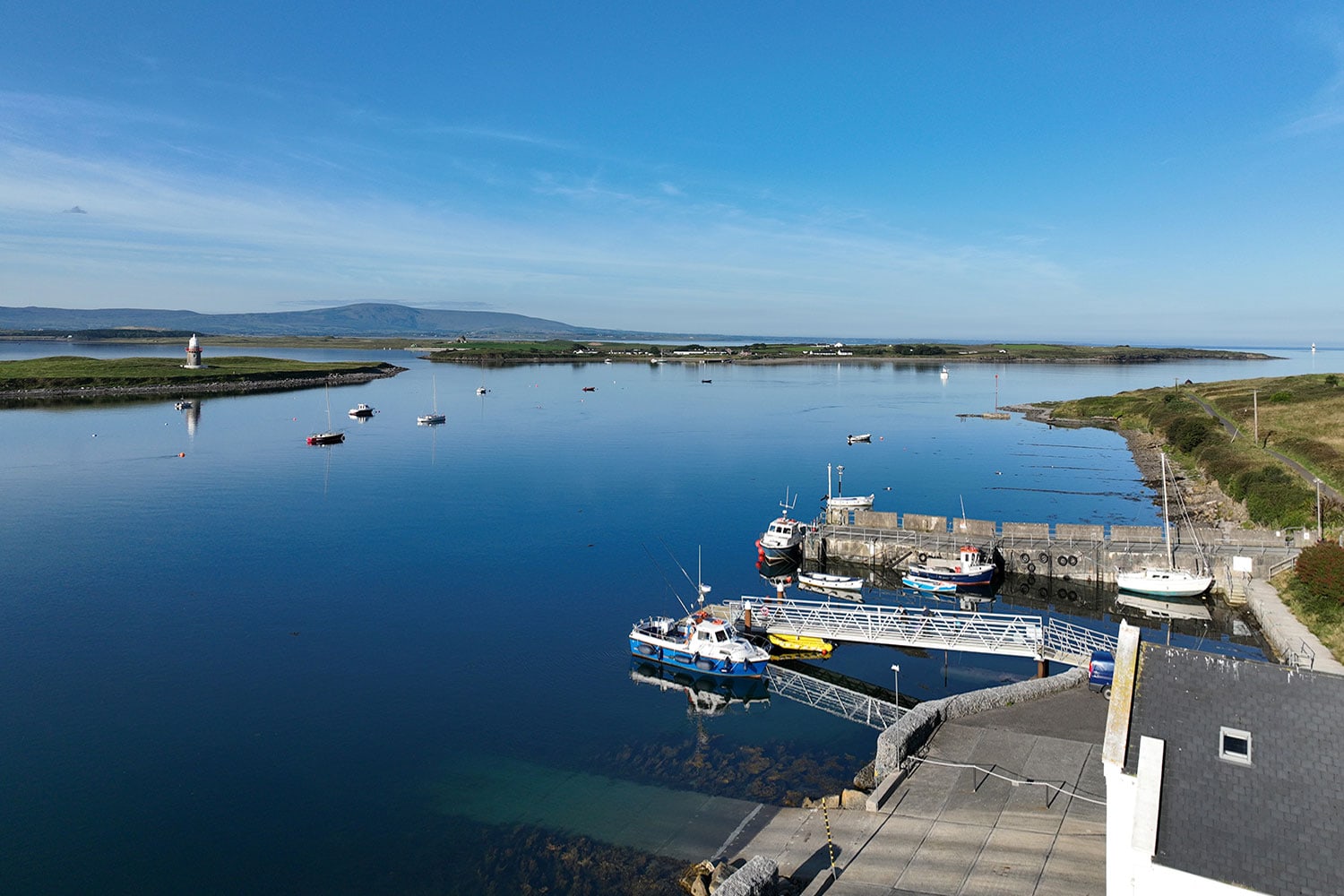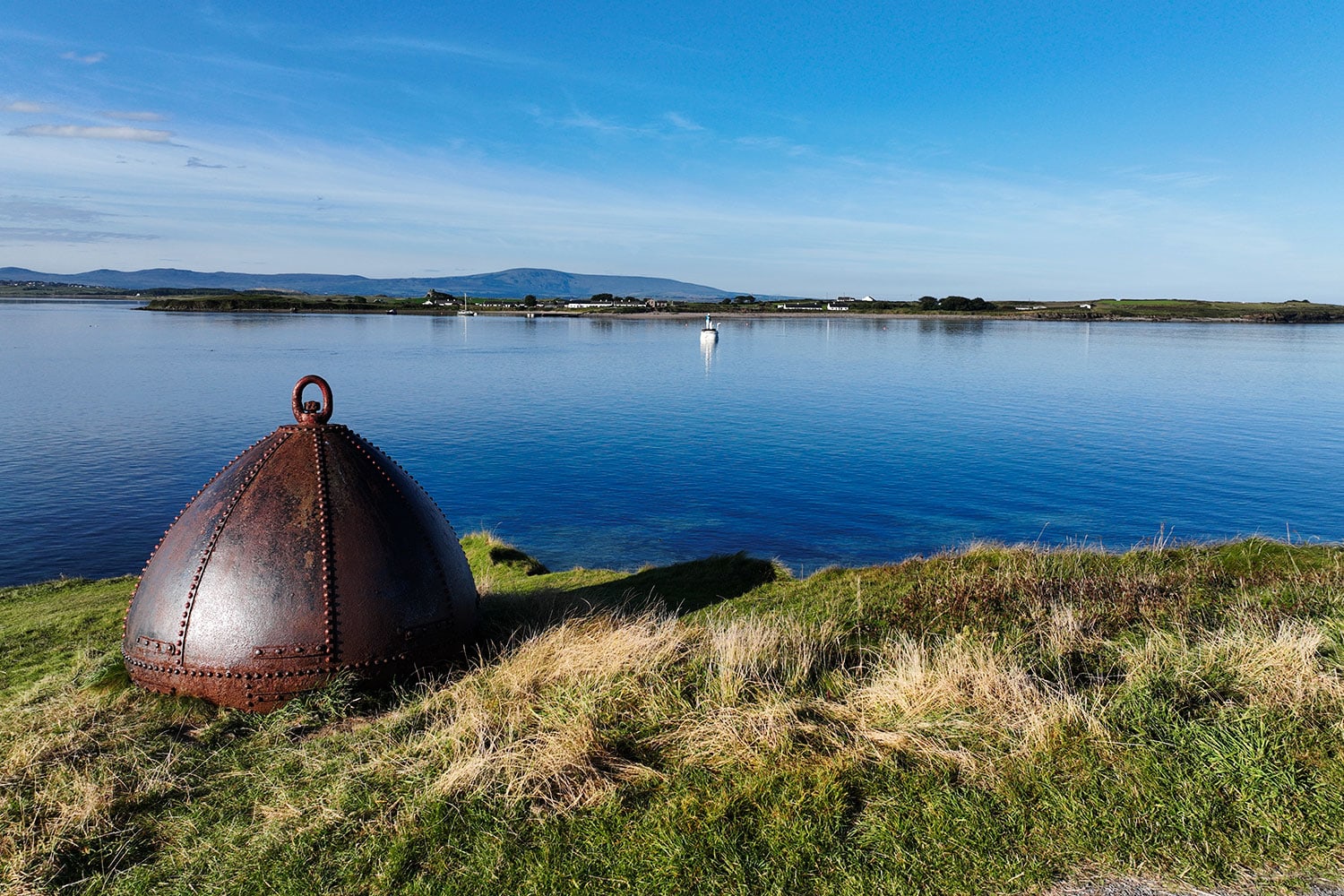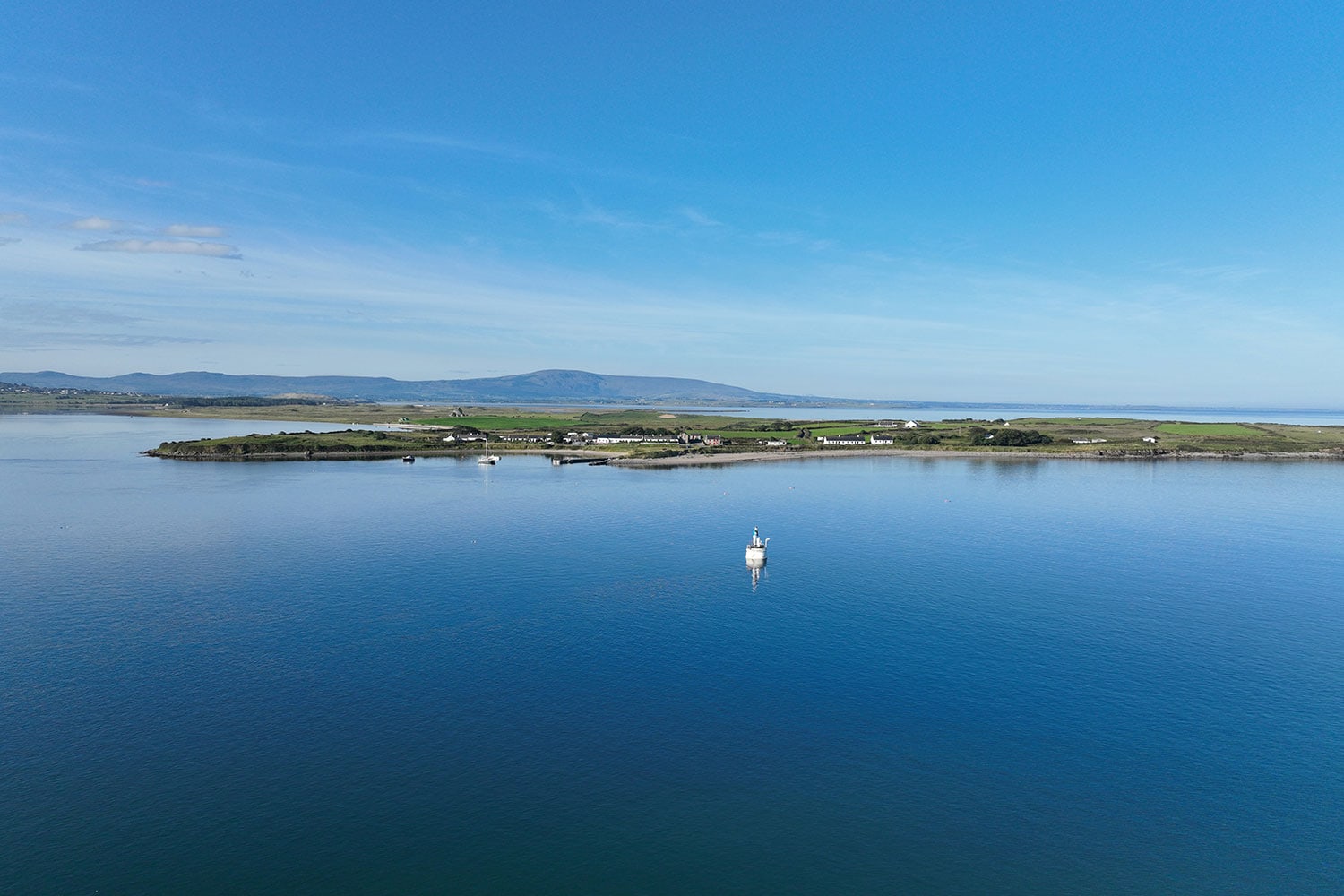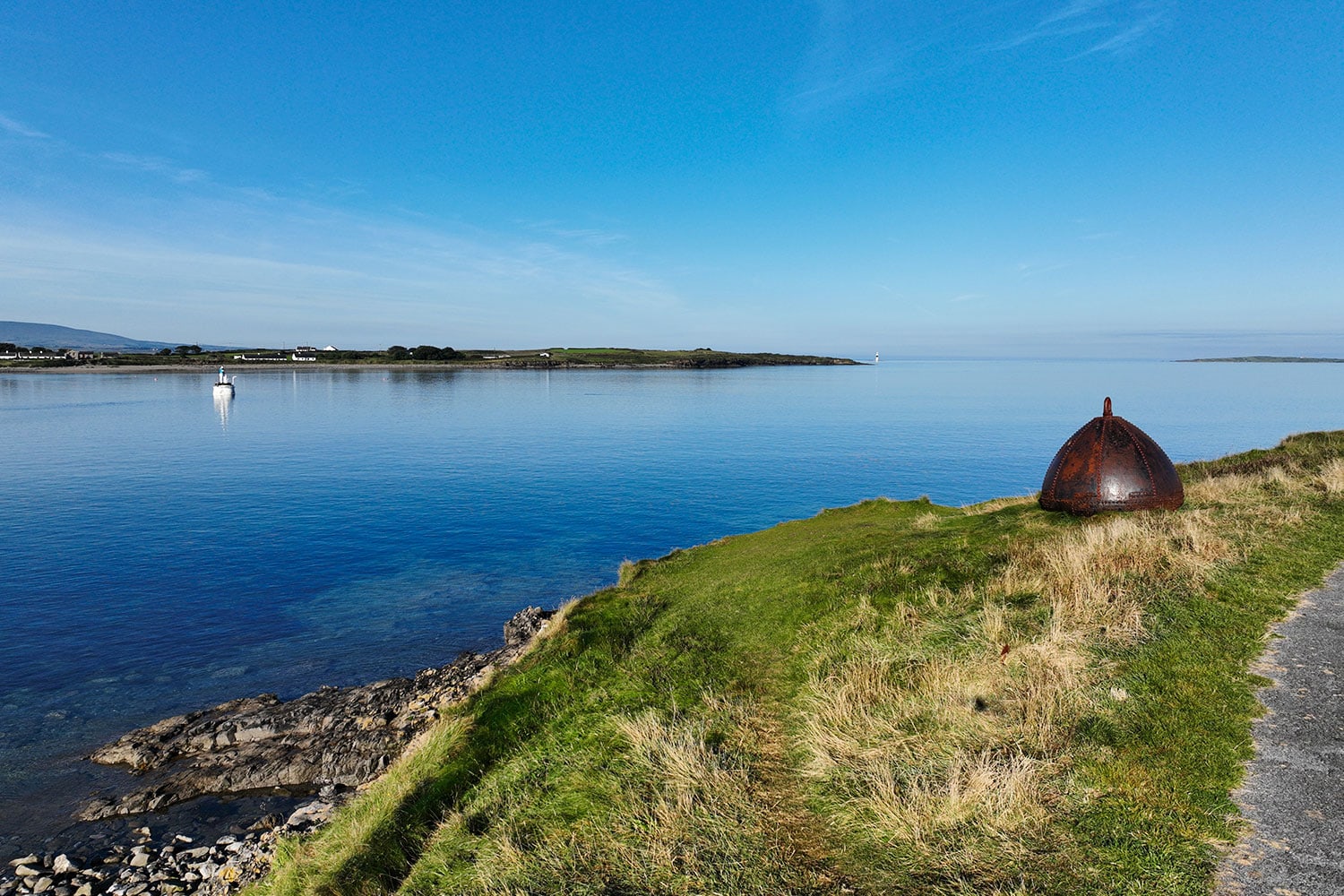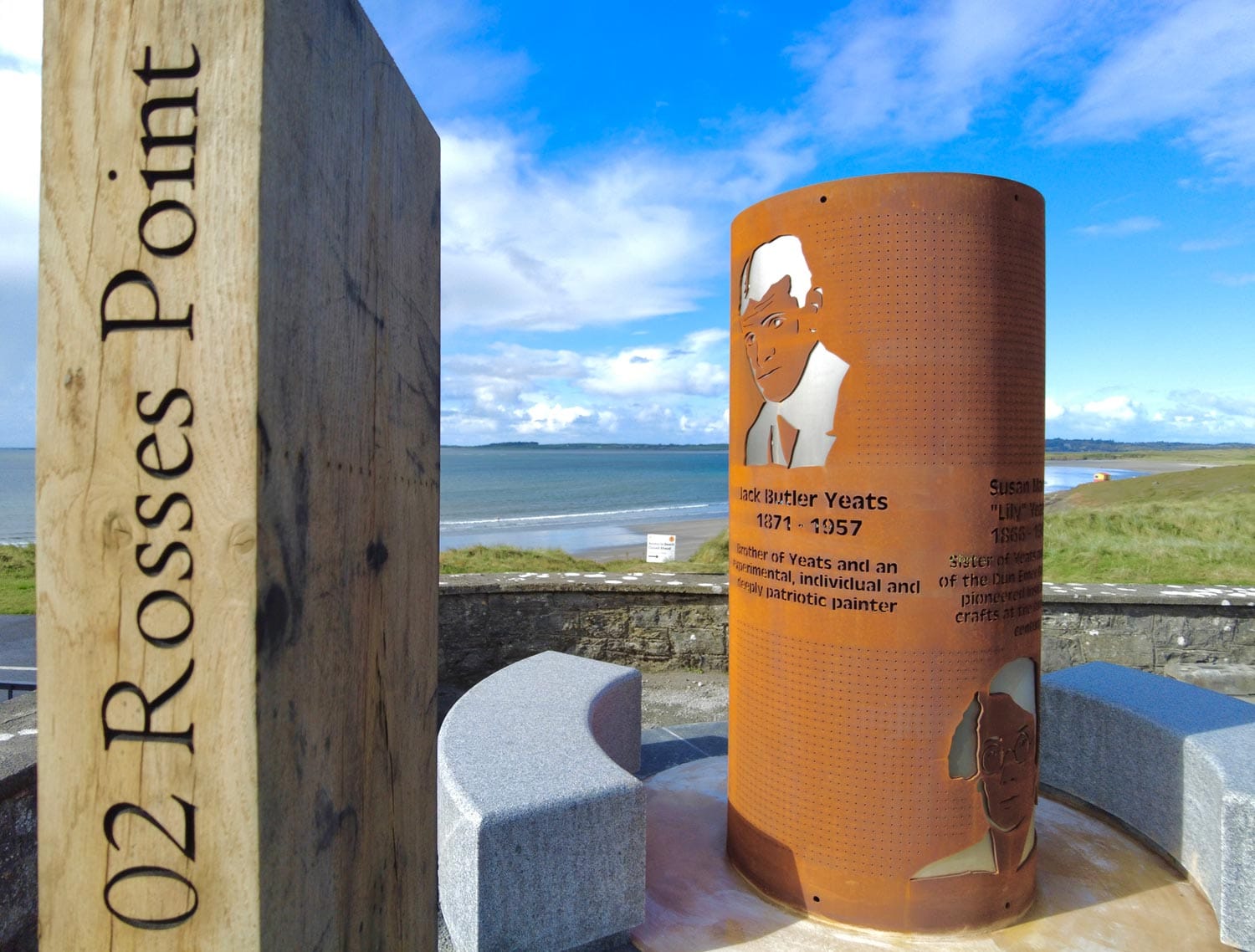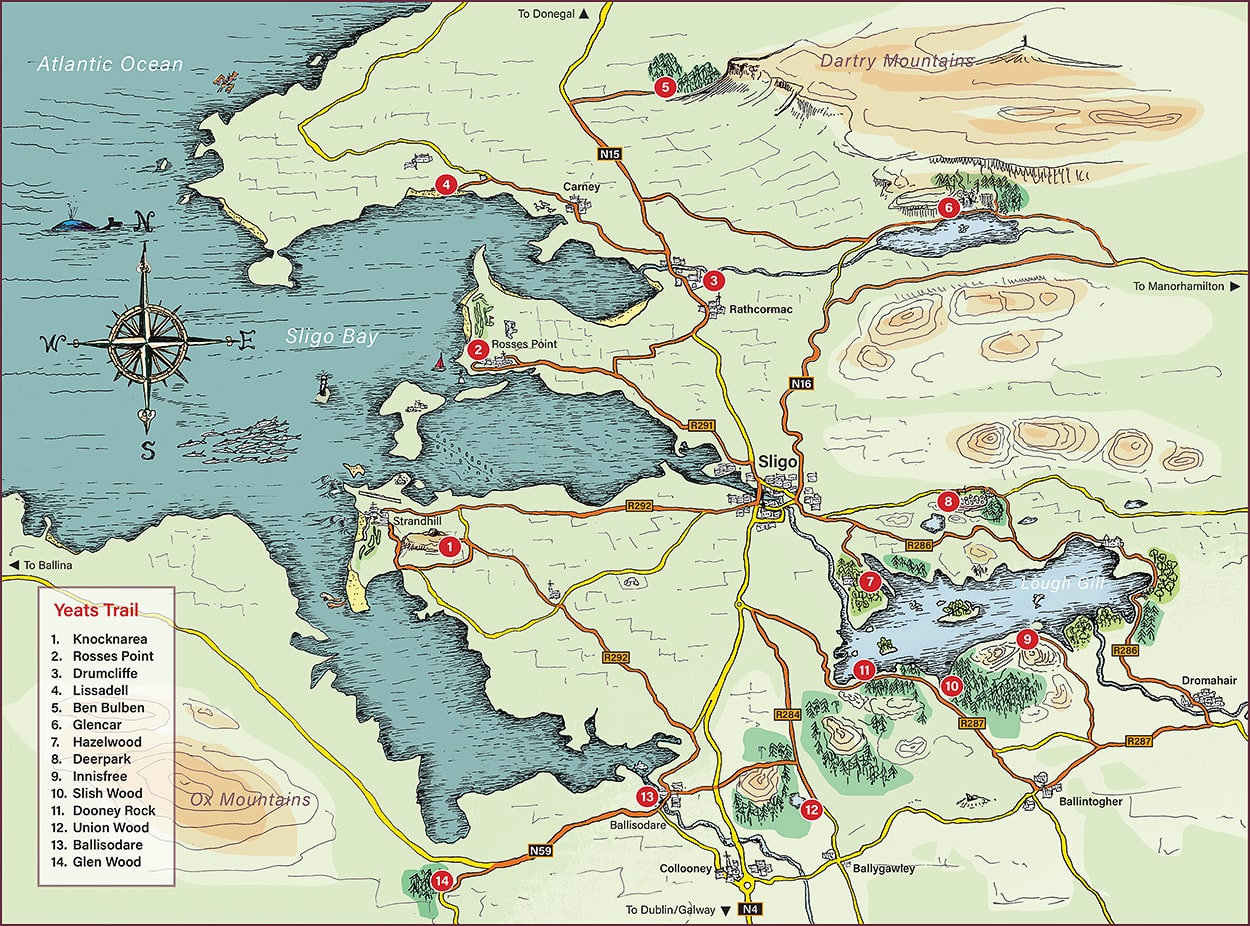The Celtic mysticism associated with Yeats derived from some of these stories told to him by local fishermen, sailors and storytellers, who would recount traditional tales of folklore which left a major impact on Yeats’s literary work.
In this poem, mythological faery characters ride out of Knocknarea and Ben Bulben in the midnight hour, with the lines delivered by the severed head of a peddler poet whose poetry and prophesy so offended the King of the Great Clock Tower that he had him executed.
from Alternative Song for the Severed Head in
‘King of the Great Clock Tower’ (1935)
Saddle and ride, I heard a man say,
Out of Ben Bulben and Knocknarea,
What says the Clock in the Great Clock Tower?
All those tragic characters ride
But turn from Rosses’ crawling tide,
The meet’s upon the mountain-side.
A slow low note and an iron bell.
What brought them there so far from their home.
Cuchulain that fought night long with the foam,
What says the Clock in the Great Clock Tower?
Niamh that rode on it; lad and lass
That sat so still and played at the chess?
What but heroic wantonness?
A slow low note and an iron bell.
Aleel, his Countess; Hanrahan
That seemed but a wild wenching man;
What says the Clock in the Great Clock Tower?
And all alone comes riding there
The King that could make his people stare,
Because he had feathers instead of hair.
A slow low note and an iron bell.
This installation overlooks the first and second beaches at Rosses Point and pays tribute to the entire Yeats family – his brother Jack B. an internationally renowned painter, his sisters Susan (Lily) an embroiderer and Elizabeth (Lollie) a publisher, their father John B. an artist, and of course his mother, who provided the connections and characters in local folklore that became such important figures in his writing.
Directions
Parking: Car park
Walking Trail: https://sligowalks.ie/walks/rosses-point/
Longitude: 54.307823 Latitude: -8.5717835
View location on Google Map
